What is the Qorikancha?
Hello, bloggers, today we will talk about Qorikancha The Temple of the Sun, also written as Coricancha or Koricancha, was the most important and sacred temple in the entire Inca Empire. Its name in Quechua literally means “Recinto de Oro”, and it was not an exaggeration: its walls were covered with sheets of pure gold that shone brightly under the Andean sun. Located in the heart of ancient Cusco, the Qorikancha was not only a temple, but the religious, astronomical and cultural center of all the Tawantinsuyo (the name that the Incas gave to their empire). Today, its remains coexist with the Convent of Santo Domingo, built by the Spaniards on top of this sacred Inca enclosure.
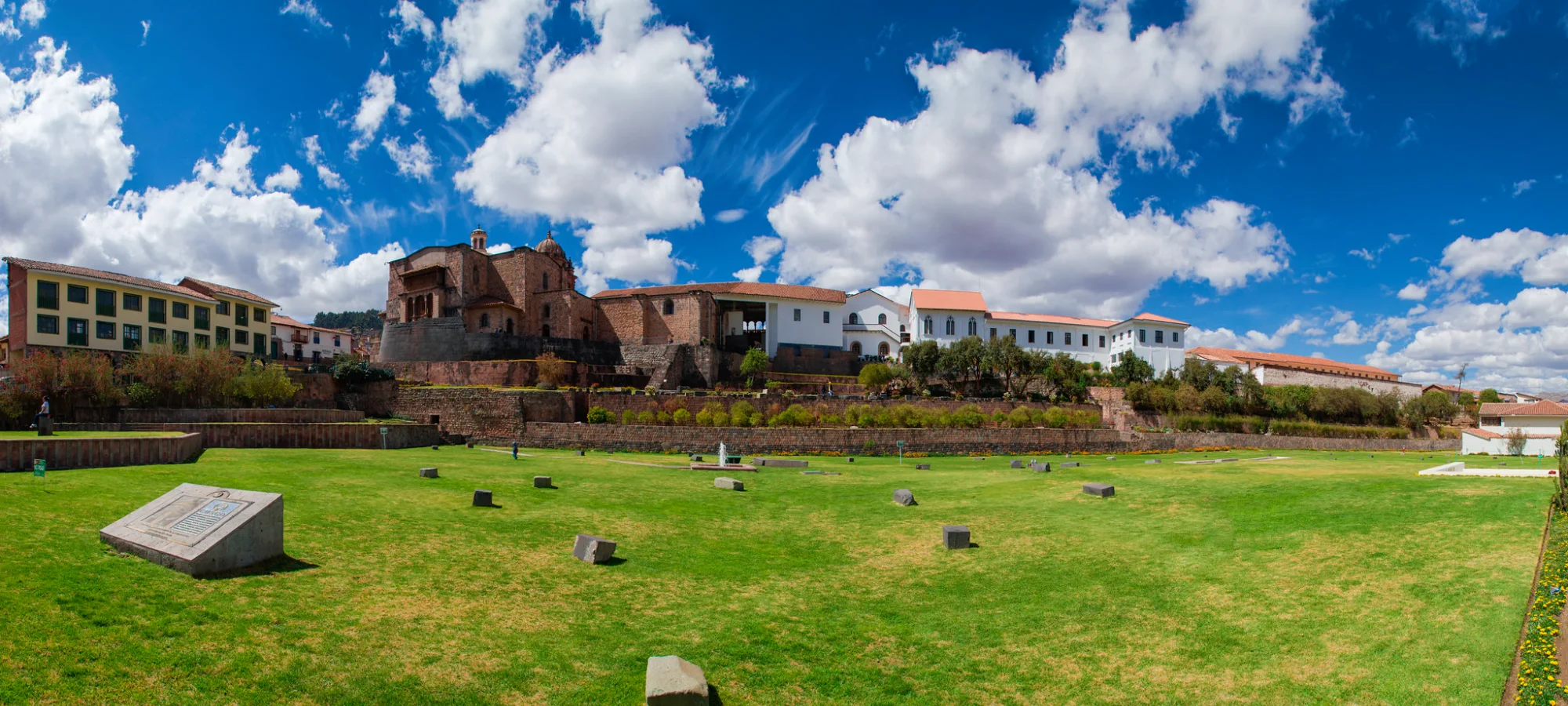
The golden origins of the temple
El Qorikancha was built during the rule of the Inca Pachacútec (1438-1471), who transformed Cusco from a small settlement into a great imperial capital. Although there was an earlier temple in the same place, Pachacútec completely rebuilt it to make it the most impressive sanctuary of the Andes. The Spanish chroniclers who saw it in its splendor were amazed. For example, Pedro Cieza de León wrote that ‘the walls were lined with gold plates from top to bottom.”. Another chronicler, Garcilaso de la Vega, described a ceremonial garden with plants and animals made of gold and silver in life size.
What was the Qorikancha like in its heyday?
Moreover, it was composed of several rooms or chapels dedicated to different deities of the Inca pantheon:
The Temple of the Sun (Inti)
The main hall was dedicated to Inti, the Sun god. In fact, there was a representation of the Sun made of solid gold. Moreover, the walls and ceiling were covered with gold sheets that shone and reflected light, symbolizing the divine presence of the Sun
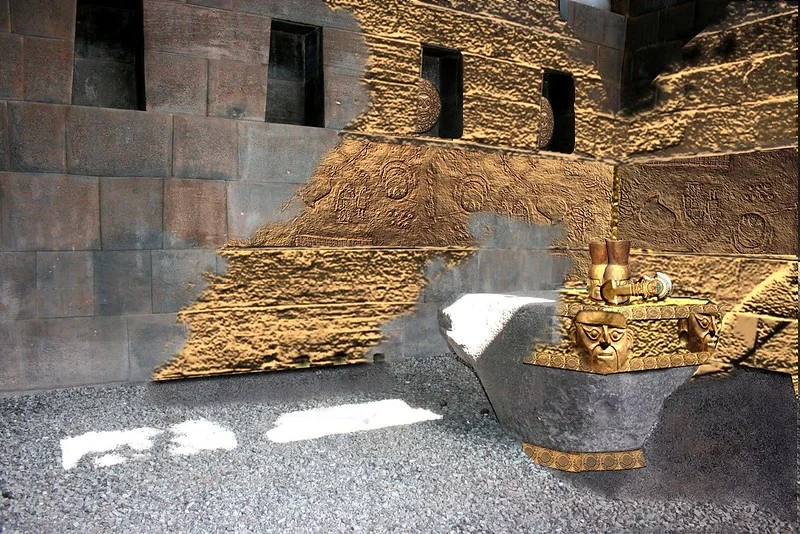
The Temple of the Moon (Mama Quilla)
This room was dedicated to the moon goddess, wife of the sun. Its walls were coated with silver, a metal associated with the Moon in the Inca worldview. An image of the Moon, also made of silver, was kept here.
Otros templos importantes
- Temple of the Stars: Dedicated to the stars and constellations, important for the Inca agricultural calendar.
- Rainbow Temple: The Incas saw the rainbow as a divine manifestation.
- Illapa Temple: Dedicated to the god of thunder and rain.
- Viracocha Temple: It honored the creator god in Inca mythology.
Astronomical center and agricultural calendar
The Qorikancha was not only a religious center, but also a sophisticated astronomical observatory. Its windows and niches were perfectly aligned to mark solstices, equinoxes, and other important astronomical events. As a result, the priest-astronomers used the temple to predict the seasons and determine the right time for sowing and harvesting.
Indeed, this knowledge was vital in an agricultural society like the Inca, which depended on the accuracy of its calendar to ensure its survival.

The sacred garden of gold and silver
One of the most amazing elements of the Qorikancha was its ceremonial garden. According to chroniclers, it contained:
- Life-size replicas of corn plants with silver stalks and gold cobs
- Llamas made of gold
- More than 20 life-size gold statues of previous Inca rulers
- Birds, butterflies and other animals made of precious metals
This garden was not only a display of wealth, but a symbol of the Inca ability to “tame” nature and transform it through their work and ingenuity.

The Spanish arrival and the transformation of the temple
When the Spanish conquistadors arrived in Cusco in 1533, they were dazzled by the wealth of the Qorikancha, the Temple of the Sun. They quickly melted down much of the gold and silver to send to Spain as tribute.
In 1534, the temple was given to the Order of Santo Domingo to build a convent. Instead of completely demolishing the Inca enclosure, the Spaniards took advantage of its impressive foundations and walls to build their church, creating a hybrid structure that exists to this day.
The amazing stonework
What most impresses visitors today is the extraordinary quality of the Inca masonry. The walls of the Qorikancha are built with perfectly cut and polished andesite stone blocks. They fit together so perfectly that it is not even possible to insert a knife blade between them.
This construction technique, known as “fine polygonal”, is so precise that it has withstood numerous earthquakes over the centuries, while colonial constructions have had to be rebuilt several times.
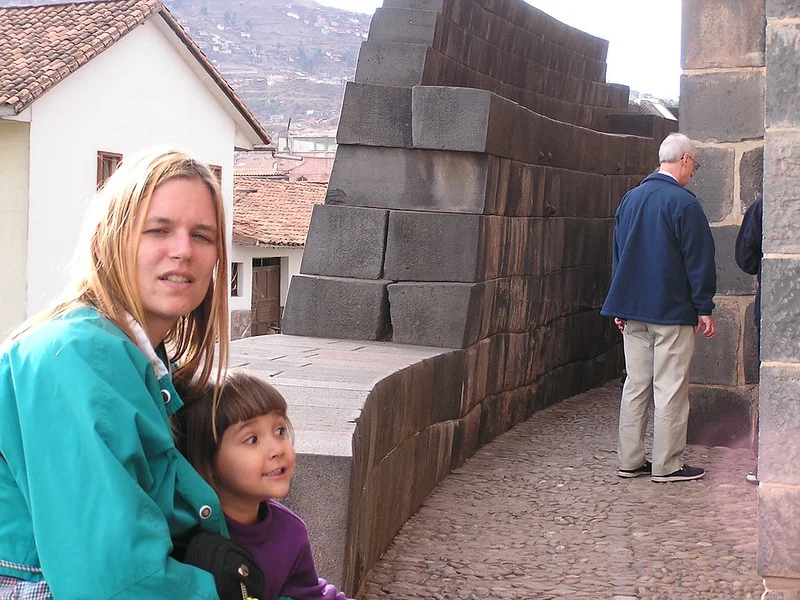
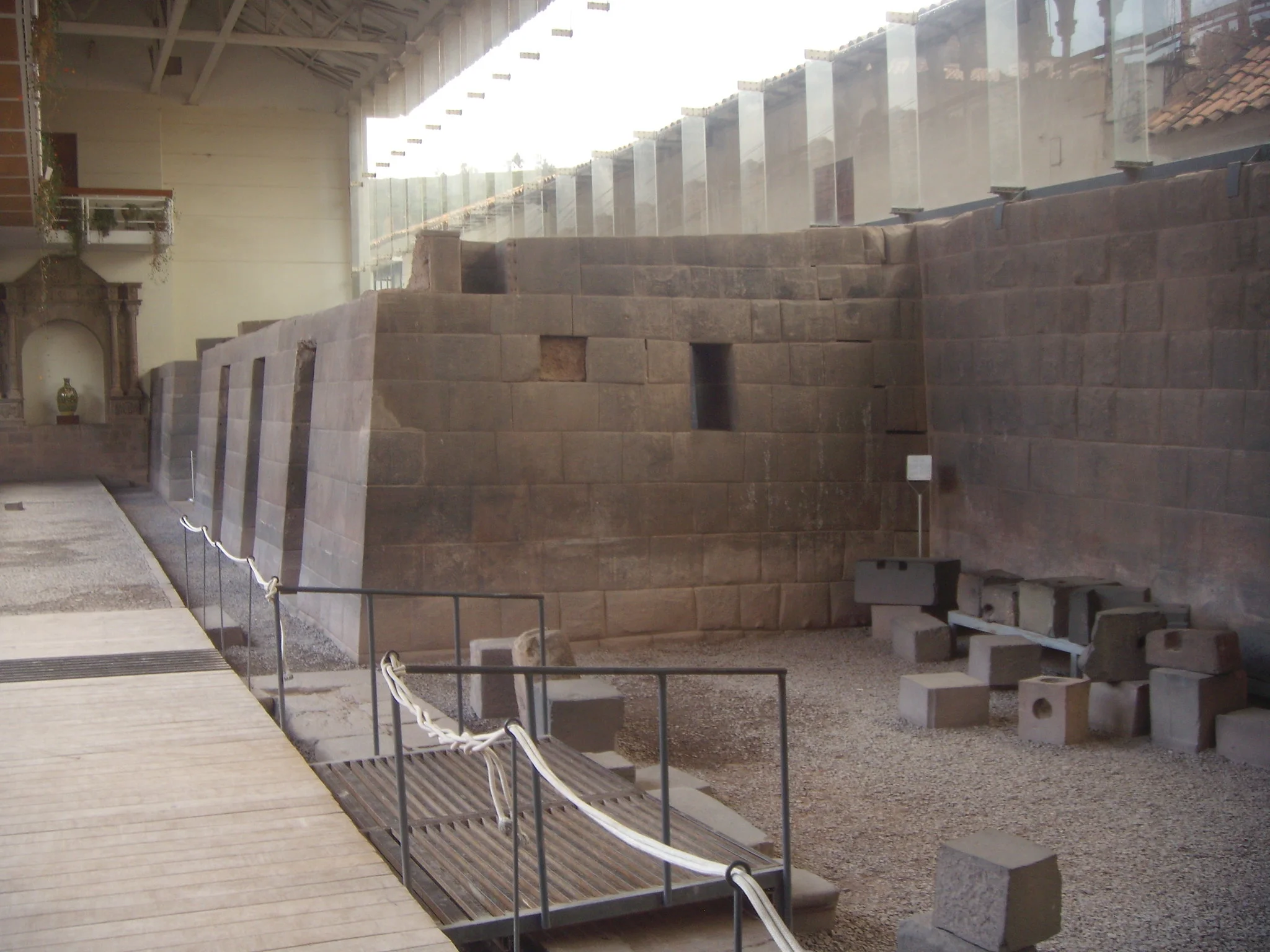
Qorikancha today: a testimony of two worlds
Today, Qorikancha is one of the most visited archaeological sites in Peru. Notably, the complex clearly shows the overlapping of two civilizations:
- The extraordinary Inca walls of perfectly carved stone
- The Spanish colonial architecture of the Convent of Santo Domingo
- Remains of the original temples and their water canal systems
- A small museum with artifacts found at the site
This combination of cultures, therefore, makes Qorikancha a symbol of the encounter between two worlds and two ways of understanding the universe
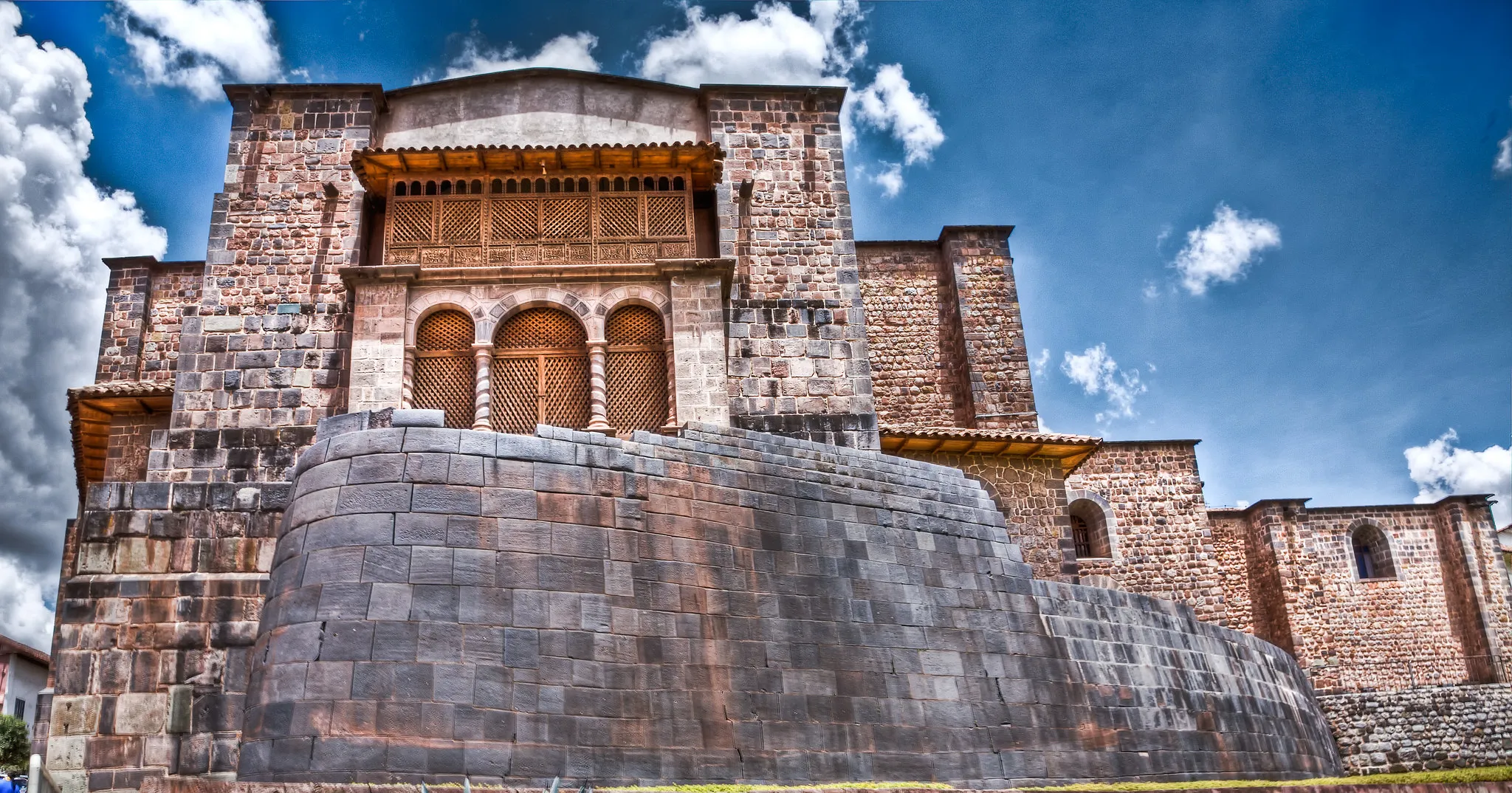
Curious facts about the Qorikancha
- The enclosure had an advanced hydraulic system with fountains and canals for purification ceremonies.
- It is believed that it kept the mummy of the founder of the empire, Manco Capac.
- The Incas held the Inti Raymi (Feast of the Sun) ceremony here during the winter solstice (June in the southern hemisphere).
- The 1950 earthquake severely damaged the colonial structure, but left the Inca walls intact, revealing the superiority of their construction technique.
- Many of the treasures extracted from the Qorikancha were sent to Spain in the famous “rescue of Atahualpa”.
How to visit the Qorikancha
- If you plan to visit this magnificent historical site, here is some useful information:
- Location: It is located on Avenida El Sol, a few blocks from the Plaza de Armas of Cusco.
- Hours: Open Monday to Saturday from 8:30 am to 5:30 pm, and Sundays from 2:00 pm to 5:00 pm.
- Admission: Ticket required, with discounts for students and children.
- Guided tours: Available in several languages, highly recommended to understand the importance of the site.
- Recommended time: 1-2 hours to appreciate the entire complex.
The eternal meaning of Qorikancha
Beyond its impressive architecture and tragic history, Qorikancha, the Temple of the Sun, remains a powerful symbol of the Andean cosmovision. It not only represents the sacred relationship between the Incas and their celestial deities, but also their profound astronomical knowledge and their mastery of architecture and engineering.
In fact, for the Incas, this temple was literally the “navel of the world”, the point where heaven and earth connected.
Even today, it reminds us of the greatness of a civilization that built one of the largest empires in America without knowing the wheel, alphabetic writing, or iron.
Each stone of the Qorikancha The Temple tells a story of ingenuity, devotion and cultural resilience that continues to fascinate visitors from around the world, centuries after the last Inca contemplated its golden glow.
Contact Us:
For more information, please contact us DREAMY TOURS, we will be happy to answer all your questions about Peru, Bolivia and Chile.
We specialize in tours and travel packages as a Travel Agency. If you need information, please contact us.
We offer tours, excursions – Peru – Bolivia – Chile:










